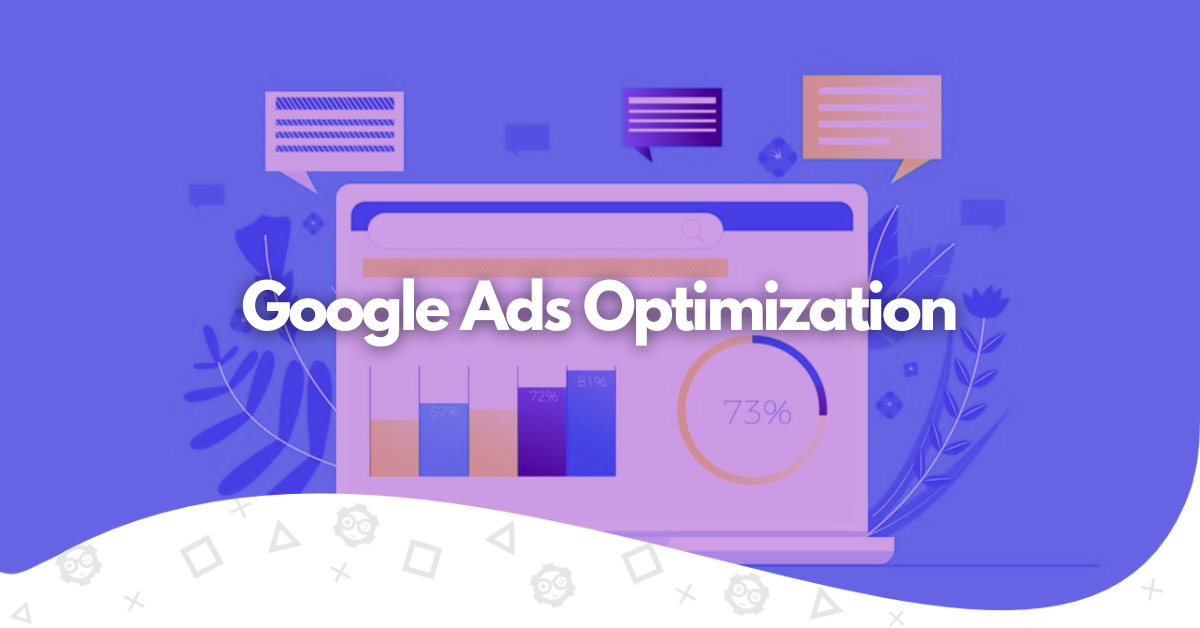Today’s competitive world makes every click, impression, and conversion count. That’s why Google Ads, when used effectively, is a significant driver of traffic, leads, and revenue.
But it’s not as simple as setting up a campaign and hoping for the best. Optimization is key. It involves a systematic approach to improving your Google Ads performance by refining keywords, adjusting bids, enhancing ad copy, and more.
This process is crucial to ensure that every penny you invest works as hard as possible for your business.
Here we’ll discuss the main strategies you should know to optimize your ads and get results online. We provide clear, actionable steps to optimize your Google Ads campaigns and focus on practical strategies that directly impact your business, helping you to attract more qualified leads, increase conversions, and maximize your return on investment.
- Google Ads Optimization Short Glossary
- Tips for a Complete Google Ads Optimization
- What is Google Ads Optimization?
- About the Optimization Score
- What is Considered When Preparing Google Ads Optimizations
- Ad Account Structure is King
- How Often Should You Make a Google Ads Optimization?
- Optimization Strategies to Get the Best Performing Ads
- Google Ads Optimization Checklist
- GamerSEO Takes Good Care of Your Ads
- Google Ads Optimization – Summary
Google Ads Optimization Short Glossary
Here’s a list of key definitions you should know about before entering the Google Ads world:
- Keywords: These are specific words or phrases that describe the content of a webpage. They are used in SEO to help search engines match you to an appropriate search query. They are also used in digital marketing for targeting ads.
- Search Terms: These are the words a user searches to find specific information. They can be single words or more complex expressions. In the context of digital marketing, understanding the search terms that lead users to a website or product can help in refining SEO strategies and ad campaigns.
- Exact Match Keywords: This is a type of keyword match in Google Ads where your ad is shown only when the exact phrase or close variants of that phrase are searched for. It is the most specific and restrictive match type but targets particular user queries and leads to higher conversion rates.
- Audience Segmentation: This process divides a broad target audience into subsets of consumers with common needs and priorities. This is then used to tailor marketing strategies and messages to these distinct groups. Segmentation is based on demographics, behavior, psychographics, and geographic location.
- Search Engine Results Pages (SERPs): These searches appear based on a user’s search query. They typically include both organic results and paid advertisements. SEO aims to get a website’s pages to appear as high as possible in the organic results section of the SERPs.
Tips for a Complete Google Ads Optimization
Here are 13 tips for finding optimization opportunities for your ads. Use them to reduce the budget and increase conversions as your marketing Google Ads strategy progresses.
Use Research And PPC Tools to Boost Expansion
Research is tiring, but it’s necessary to ensure you have enough data to adjust your ads.
You can use the following tools to help you gather information:
- Google Analytics
- Google Trends
- Google Ads Manager
- Google Keyword Planner
Each allows you to explore keywords and find relevant terms with low bid prices and high search volume for your ads and website.
Consider that all the data you collect is average. This means it won’t tell you exactly what can work. However, it will give you an approximate search and estimated CPC that you can use to build a budget.
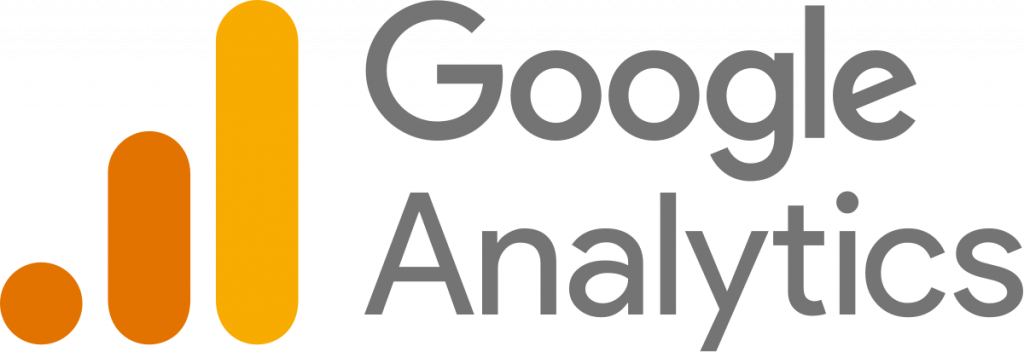
Prepare Single Keyword Ad Groups
Also called SKAG, this methodology allows you to prepare ad groups with one keyword per campaign. Of course, you need to select ads relevant to the same term.
When using this methodology, the 1:1 ratio allows you to build more keyword relevance than other ads.

Match Landing Pages and Ad Copy With Search Terms
Combine your ad copies with the information on the landing pages for Google Ads and search terms to craft a personalized experience when consumers see your ads.
This leads to better performance, such as:
- Higher CTRs.
- Lower bounce rates.
- More conversions.
Digital marketers can use this to build trust, credibility and connect with their target audience. Hence engaging with their needs and interests.
This also indirectly improves your Quality Score due to using valuable keywords with your ad groups, which translates into lower ad costs and better ad schedule and placements.
We recommend using long-tail keywords to find better terms with less competition.
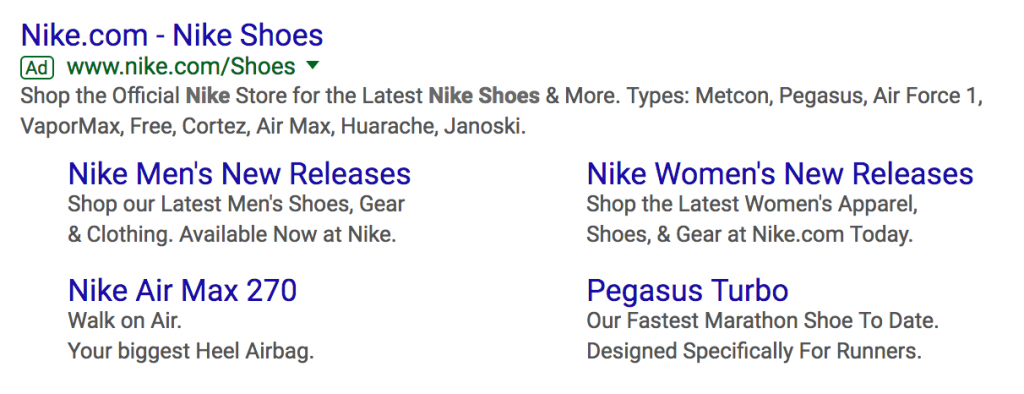
Try Other Campaign Types
Applying different campaigns to your business could help you reach more people and untouched audiences. And since they have their formats and benefits, you could find ways to connect that you didn’t think of before.
The more you try, the more you learn about ads and your audience, which translates into finding precise ways to get conversions.
The best thing you can do is test from Youtube to display ads and see which campaign performs better. All you need to ensure is setting clear goals and track conversions.
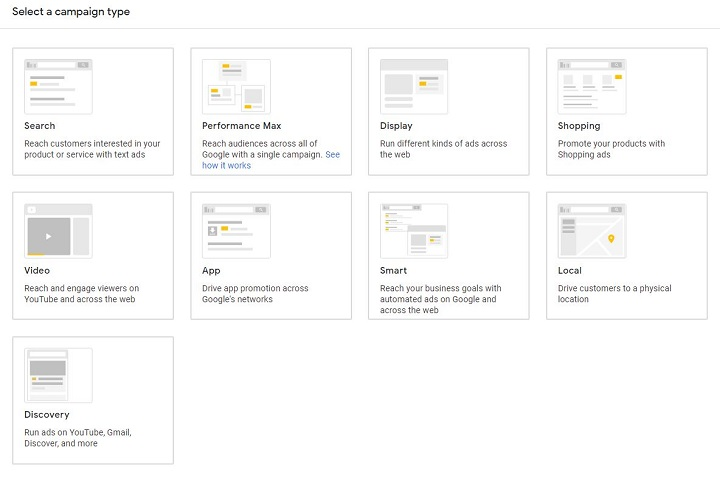
Don’t Lose Sight of The Right Metrics
With so many metrics for Google Ads, losing track of what matters is easy. When doing PPC, you may only think about statistics like CTR or CPC, but others also matter as they are clear indicators of a campaign’s success.
Some of them are:
- Return on ad spend (ROAS)
- Cost per acquisition (CPA)
But, to precisely know which metrics to use, you should use Google Analytics data and search terms reports to be sure.
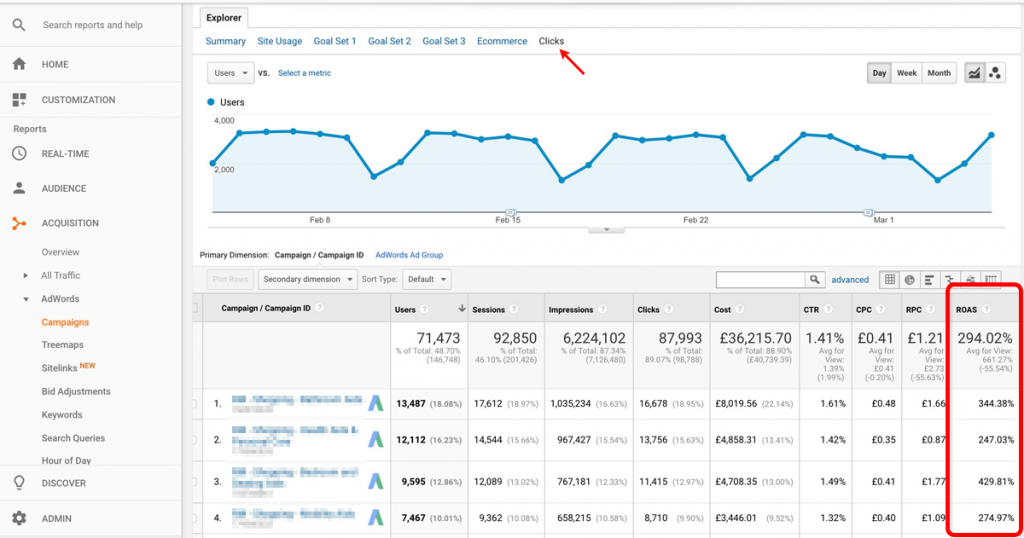
CTA and Search Intent Match
Your customer will go through different stages in the customer journey. So, you must align your CTA with the search intent to increase the possibility of getting a click. Why is that?
Because of a “PPC thermometer” that explains there are different temperatures for customers and their conversion cycles. So, for example, people that arrive at your website through display ads tend to have a cold temperature and won’t respond to a hotter CTA.
So, you must prepare keyword research and identify the terms’ temperature to determine which CTAs will work better with your ads.
Note: This also applies to your landing pages.
Now, you have to consider the following:
- Don’t greet them with intrusive and heated CTAs or content when approaching cold leads. Since they are most likely at the top of the sales funnel, you should try to move them through until the final step in their customer journey.
- Finding the right combination of CTA and search intent will significantly decrease your acquisition cost and increase conversions.
- There’s a common conception that cold visitors come from display ads and hotter leads come from search ads.
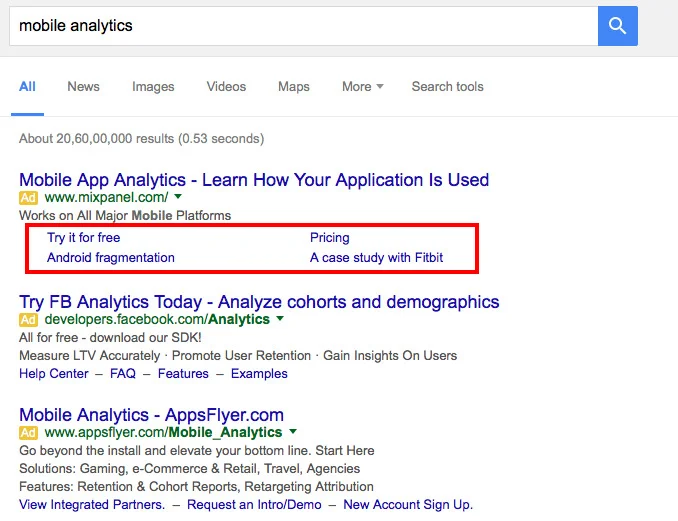
Use Geolocation to Improve Conversions
Leaving your ads with a generic location or going all in with your country is a bad idea if you want to increase conversions. You can’t expect your ad to perform the same in all states, and you’ll waste money.
But how can you know which states or countries to target?
Check your data.
Use the Location tab in your ads manager to see which regions are performing better to increase the budget and stop showing in those underperforming places.
If this is too difficult, you can check your campaigns and see the best-performing locations to focus on.
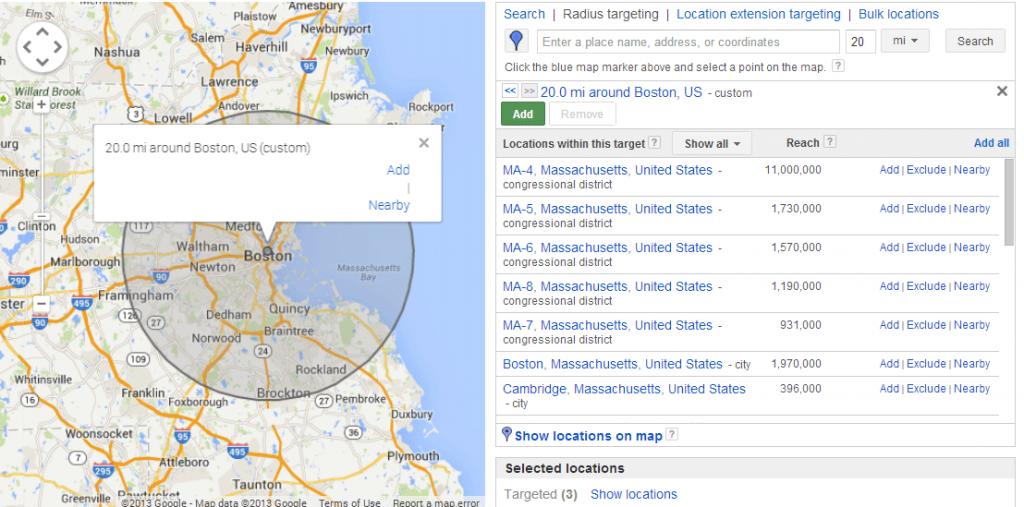
Demographics Matter
Your demographics reflect the audience that will see your ad. And this will also determine how many sales you get. You must consider:
- Household income.
- Gender.
- Age.
- Education.
- Attributes.
- Location.
- Everything that helps you set them apart from other people.
A person with a low income won’t purchase a high-end product due to their lack of acquisitive power. So, look on your Audiences tab for the demographics data and select those that apply to your criteria.
Invest in them after you’ve identified the demographic parameters that work best.
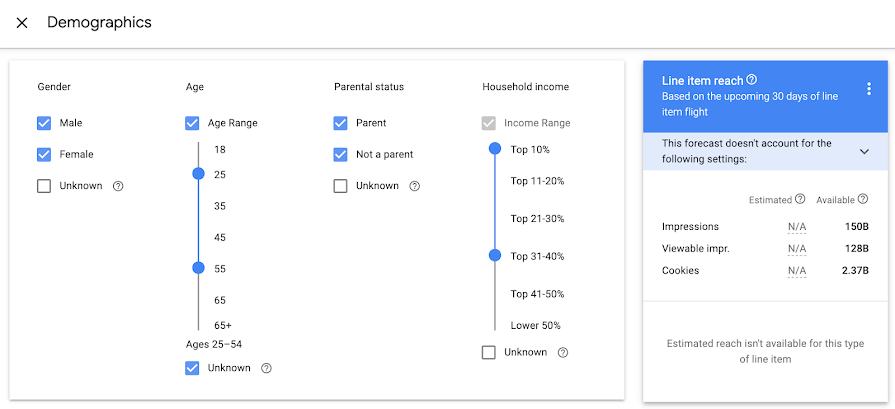
Mobile or Desktop Efforts? Check What the Data Says
The Google Ads Manager lets you see what device people use to see your ads. This information helps you manage your budget and decide where to bid more.
For example, if you see that desktop ads perform better, you can adjust the bid to allocate more effort. Depending on the rest of your ad settings, these modifications could have exponential or minor effects.
Now, you can also apply this to audiences. If you see that a user persona is not working, you can narrow it down, modify your bidding and try those who are working.

Upgrade Your Keyword List
The keywords that used to work incredibly well a few months ago may not be as great now. The Internet and your consumers change constantly. And so, the terms that brought you traffic could become irrelevant keywords and make you waste money.
Treat them as data and refine them constantly to find opportunities where CPA is low and your conversions increase.
Use a keyword research tool like Google Trends or the Google Keyword Planner to gather performance data and other relevant information. Then choose the terms you want to use according to the customer journey stages.
The right keywords will give you a positive ROI in the long term as you optimize and refine your term list.
Note: If you’re having problems with the keyword planner, use search terms reports. This will give you concrete data that shows conversion information about what triggers your ads.

Use Exact Match Keywords
Exact match keywords provide you with better search query results and optimize your budget.
Long-tail keywords are also a good opportunity for you as they don’t have high competition and give you lower bidding changes.
But how long should the keywords be?
They depend on your business and approach. But generally, they should be from 2 – 5 words as one-word keywords are more expensive.
Here’s an example:
If you’re publishing an ad about Elden Ring, then the best keywords for conversions could be:
- Buy Elden Ring now
- Cheap Elden Ring CD Key
- Cheap Elden Ring Steam
- Cheap Steam Elden Ring Key
Broader terms like “Elden Ring” or “Buy Elden Ring” will be more expensive. While other queries like “Get Elder Ring game for cheap money” could have low searches.
So, precise and long keywords will provide better results and target the right audience for Google Ads. Figure this out by considering more than just the typical metrics, including other formulas like ITC.
Leverage Ad Extensions
The Google Ads extension is extra information that shows with your ads. They are also called “assets” and include links to other pages on your website and could also have CTAs or product details.
Specialists leverage them with their advertising to create more detailed paid content to increase their conversion chances.
A few extensions you can use add:
- Phone number.
- Location.
- Sitelinks.
- Prices.
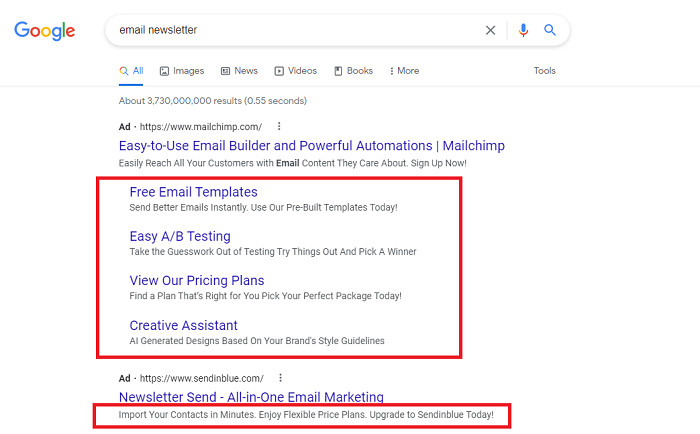
Optimization Never Ends
Optimization will never be on your side. There will always be new keywords or bidding strategies you can follow to reduce wasted ad spend or improve your ad copies.
That’s why ad testing is the best way you are ahead of your competition. So, here’s what you can do:
- Change your headlines constantly.
- Develop more compelling ad copies.
- Prepare regular A/B tests.
- Check the ads manager metrics.
What is Google Ads Optimization?
Ad optimization involves analyzing your Google ads account data and finding opportunities to improve your results.
Google ads campaigns are constantly changing performance. This is because the market is always changing its trends and searches. So, settings, builds, and A/B tests that performed great during a time could be underperforming after a few days or months.
But how can you know if you need to improve your Google ads campaign?
Let’s say you have established an ad group and started using broad-match keywords to launch your campaign. During the first month, they worked great and brought many hot leads. However, starting the second month, you noticed you’re not getting enough leads, and your CPC is increasing. This means something on your ads is not working properly, so you pause them and check what’s happening.
The optimization allows you to allow you to make informed decisions and consider what would happen if you use different keywords or settings.
About the Optimization Score
The optimization score is a metric that shows how your search ads perform. This score goes from 0 to 100% and expresses the potential your ads could achieve.
It gives you recommendations to optimize Google ads and shows the potential impact you could get from changes.
This metric changes in real-time based on multiple factors such as:
- Statistics.
- Search campaigns.
- Negative keywords.
- Ad account and campaign status.
- Recommendations status and history.
- Ad ecosystem.
Optimization suggestions will also change based on the criteria above to give you more opportunities to optimize Google ads campaigns.
Optimization Focus
Optimization focuses on how the recommendations and optimizations align with your business goals. Google will suggest tailored options, but you still have to ensure they are aligned with your company.
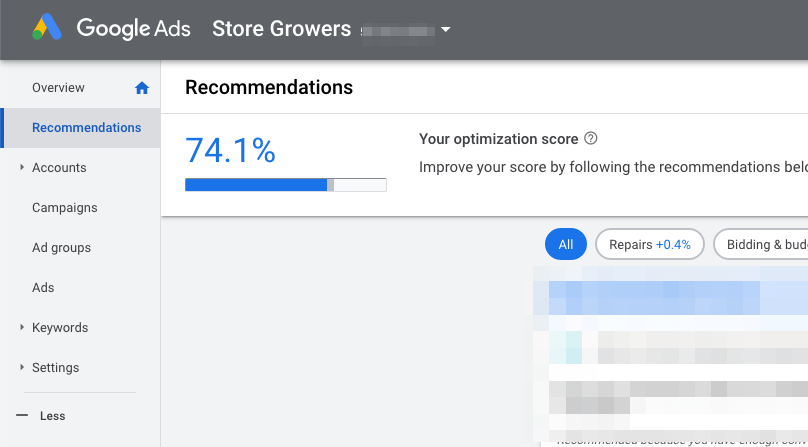
What is Considered When Preparing Google Ads Optimizations
When you’re considering optimizing your Google ads, you must ensure it covers all four sections:
- Campaigns.
- Ad groups.
- Ads.
- Keywords.
Depending on how deep your optimization is, you could also explore and analysis:
- Current tools.
- Trends used.
- Customer preferences.
- Competitors.
- Ad copy.
- Ad relevance.
- Ad rank.
A proper optimization needs a well-structured account that includes all aspects of your campaigns, including quality scores and ad spend, to avoid issues like:
- Irrelevant clicks.
- Higher CPCs.
- Higher bounce rates from a landing page.
So, ensure you organize your Google ad accounts to prevent unfortunate situations.

Ad Account Structure is King
An ad account has different campaigns at hand. You can separate them depending on their type and where they appear:
- Text Ads: Include only texts and are presented on search ad campaigns.
- Responsive Search Ads: They are shown in texts and displays, adapting their size to screens and space available.
- Image Ads: They are JPG, PNG, or animated formats like GIFs. It’s only shown through display options.
- App Ads: These are displayed only in apps that you can download. They are present and promote applications.
- Video Ads: Are shared through streaming media or are run through as standalone.
- Shopping Ads: They show products, titles, prices, store names, and more.
At the same time, each campaign has its own ad groups that align with the ad type and objective. There could be as many groups as you want, just ensure they are related somehow for maximum organization. You can name them for better segmentation and semantic relevance.
Each ad group must have its own keywords for better identification and ensure they reach the right target audience.
When you structure your ad account this way, you have control over all your PPC campaigns and their approach. It’s easier for you to find them and locate the ones underperforming.

Google Ad Account Structure Example
Here’s a hypothetical example of a well-structured Google Ads account for a company that sells CD Keys.
Account: GameKey Central
Campaign 1: Search Campaign – Game CD Keys
Ad Group 1a: PC Game Keys
- Keywords: PC game keys, buy PC game keys, discount PC game keys
- Ad 1: “Find Your Next Adventure with Our PC Game Keys”
- Ad 2: “Get the Best Deals on PC Game Keys at GameKey Central”
Ad Group 1b: Console Game Keys
- Keywords: console game keys, buy console game keys, discount console game keys
- Ad 1: “Unlock Your Favorite Console Games with Our Game Keys”
- Ad 2: “Score Big Savings on Console Game Keys at GameKey Central”
Campaign 2: Display Campaign – Brand Awareness
Ad Group 2a: Brand Story
- Keywords: game key seller, trusted game key provider, best game key site
- Ad 1: “GameKey Central – Your Trusted Source for Game Keys”
- Ad 2: “Discover the GameKey Central Difference – Quality Game Keys, Great Prices”
Ad Group 2b: Customer Testimonials
- Keywords: game key reviews, game key testimonials, game key feedback
- Ad 1: “See What Gamers Say About GameKey Central”
- Ad 2: “Real Gamers, Real Reviews – Check Out Testimonials for GameKey Central”
In this structure, two things are happening:
- The search campaign is product-focused. It aims to drive PC and console game keys.
- The display campaign is brand-focused. This means it’s meant to increase brand awareness and trust.
Each ad group within the campaigns targets a specific aspect of the campaign’s focus, and the ads within each ad group are designed to appeal to the users searching for those specific keywords.
How Often Should You Make a Google Ads Optimization?
You should make optimizations once a month and small updates every week to maintain full performance, and keep your cost per click controlled. Still, the frequency of optimizing Google Ads will depend on four main factors:
- The established ad budget.
- Historical information available on platforms such as Google Analytics.
- Competitors.
- Your goals when using PPC.
However, before you can do any optimization, you need fresh data. Google ads platform requires at least four weeks for you to get information that you can use to determine if improvements are required. That is if you don’t have historical information or don’t use a large budget.
If you’re a large company used to investing in PPC, you may get results in two weeks or less. This will help you prepare optimizations sooner to avoid potential capital losses.
Optimization Strategies to Get the Best Performing Ads
When preparing a Google ads optimization, you should consider at least four strategies to cover all your ad accounts.
Let’s break them down:
Focus on Conversion Tracking
If you’re doing Google ads with other goals than conversions, you probably are spending too much money and not getting good results. By the way, have you wondered about how much we should allocate for Google Ads?
Metrics like conversion rate or cost per conversion are crucial to understanding how your ads perform and if they need optimization. Yet, 41% of companies in a study made by Gitnux had no one in charge of conversion optimization efforts.
This is why so many businesses fail in their PPC efforts.
But now, how can you identify the conversion data on your Google ads account?
Search for Queue Cost/Conversion.
Here you’ll see if your campaign generates conversions and compares it to what you’re spending to get leads.
Now, when checking conversion rates, you must compare and analyze similar values so you don’t inflate results. This means all your campaigns must contain the same value if you’re checking sales.

Targeting PPC
Ad targeting defines how effective your advertising will be. It’s defined by multiple factors such as daily budget, preferences, keywords, etc. It’s all meant to target specific audiences to help your business maximize revenue and profits.
When checking your targeting options, you should measure the cost per conversion metric and see if your target cost is related to your budget or if you need to minimize it. It all depends on whether you’re scaling or looking for efficiency.
If you’re happy with your cost-conversion rate and price, you could switch to other aspects, like addressing negative keywords.
These are terms where you don’t want to appear, and they take budget and effort from your account. When you add negative keywords to a blacklist, you ensure your search intent and clicks align with your objectives.
Note: Google ads’ success depends largely on your search terms. So, focus on those that have clicks and high impressions.
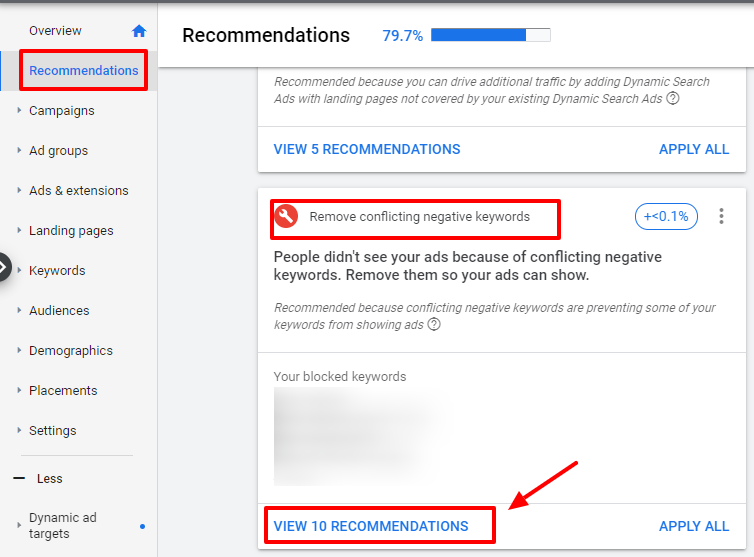
Consider Click Through Rate
The Click Through Rate (CTR) is the parameter that shows the times your ad is clicked and the times it’s shown. This is an important metric as it provides more information about your ads and Google Analytics account.
It helps you find ad sections that you could improve without touching the segmentation settings. For example, headlines and captions.
You should check your ad groups and see which are working as supposed to and eliminate those underperforming. To do so, study clicks and impressions and see how they correlate.
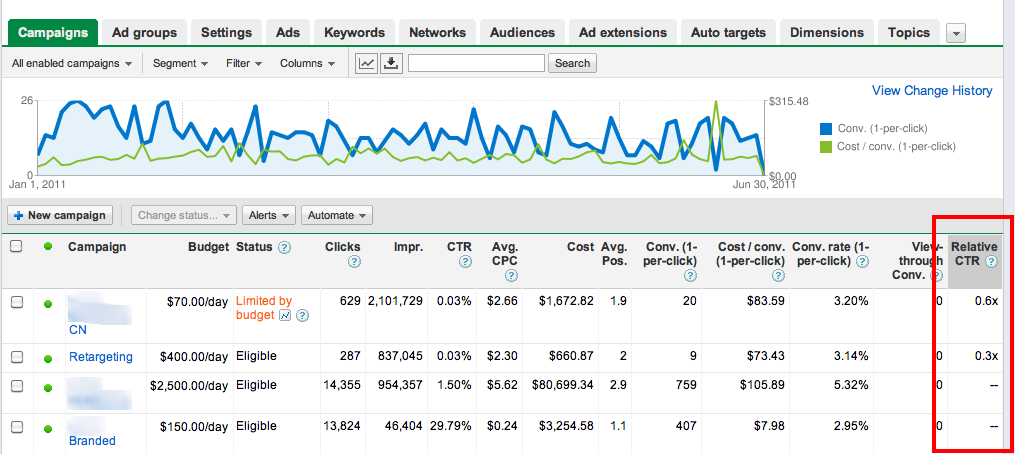
Improve Quality Score
We’ve already talked about the Quality Score, but now, you’ll see why it’s so important.
This is a crucial metric because it determines how much you’ll pay for each click and your ad position compared to others. It considers three parameters:
- Expected click-through rate.
- Ad relevance.
- Landing pages experience.
Whenever you see in an ad group that you have a low-quality score, you must verify them. Why?
Because if you perform with it, you’ll end up paying more money for worse results.
So, what you need to do is:
- Find out which keywords are underperforming and change them.
- Modify content-related issues based on recommendations.
- Remove the keywords that don’t match your search intent.
- Avoid using irrelevant terms.
- Craft more compelling ads.

Smart Bidding Strategy
The bid is the money you pay for your ad to appear in search results. Each keyword has a different price depending on traffic volume, competition, and potential conversions.
Depending on the search term, Google will suggest a lower or higher bid adjustment.
You have to examine the type of keywords and decide how much you’re willing to pay for them. But you can always use Google’s automated processes if you don’t want to do manual bidding.
As a business, you must ensure that all keywords and ads are focused on your goals to make the maximum conversions.
But now, how can you decide when to do manual or automated bidding?
You should automate your bids to save time and focus on other Google Ads aspects. But, if you instead take time, check segmentation, and confirm what you pay for ads, then manual is for you.
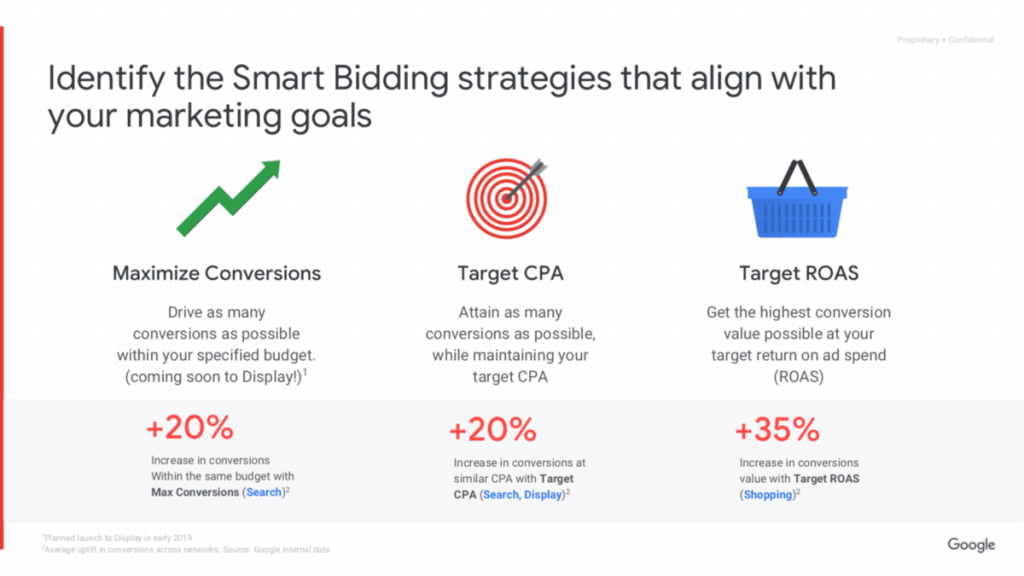
Google Ads Optimization Checklist
Optimizing Google ads is time-consuming, exhausting, and expensive if you hire someone else.
So, here are three checklists you must follow to ensure your ad accounts are fully reviewed and updated.
Ad Copy Checklist
- The headlines contain the target keyword or a synonym.
- The headlines are intriguing and express emotions.
- The headlines are clear.
- The headlines reflect what the landing page shows.
- The ad copy has a clear CTA and is aligned to search terms.
- The copy doesn’t have grammar mistakes.
- The copy explains your services clearly.
- The copy touches on the audience’s pain points.
Bid Adjustments Checklist
- Correctly set monthly and daily spending limits.
- Each bid is aligned with a business goal.
- Adjust bids according to the highly converting ads.
- CPM bidding is a priority for brand awareness.
Campaign Performance Checklist
- Apply different tracking methods.
- The PPC campaign information is connected to an analytics platform.
- Historical data is stored for future optimization usage.
- The bid adjustment supports high-performance ads.
- Keywords are researched using different tools.
- Negative keywords are deleted or added as poor-performing search terms.
- Specific ads target search intent and audiences.
- A/B testing usage to test the ad campaign.
After checking these steps and applying them to your campaigns, you’ll increase your Google ads success.
GamerSEO Takes Good Care of Your Ads
You already know the basics of Google Ads. However, each business case is unique, as different industries and target audiences require different approaches to crafting a PPC strategy.
At GamerSEO, we provide a specialized advertising management service for your company and budget. We take care of your ads and optimize them to match your target audience and produce profits.
Reach out to us now and take the next steps to produce high-quality ads that convert and provide revenue!
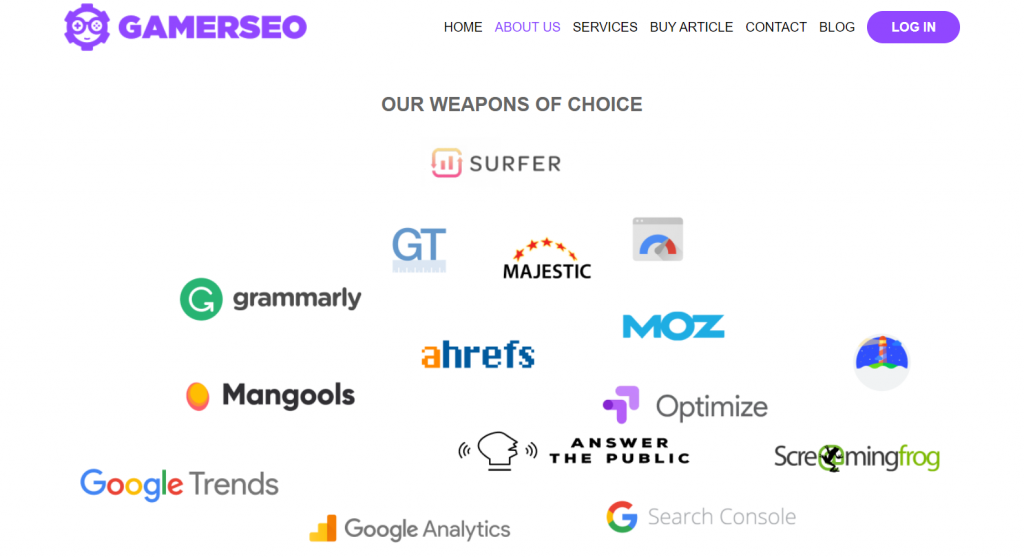
Google Ads Optimization – Summary
Google Ads optimization is a vital component in the digital marketing toolkit of any business. It’s not a one-time task but a continuous testing, analysis, and refining process.
The strategies and practices we’ve discussed in this guide are designed to help you maximize the effectiveness of your Google Ads campaigns, driving higher-quality traffic, increasing conversions, and boosting your return on investment.
Utilize these methods thoughtfully to gain an advantage, drawing inspiration from Google Ads examples to effectively demonstrate the value of your products and services to your audience.
Apply the optimization principles above to ensure every dollar you invest in Google Ads is not just spent but truly invested in the growth and success of your business.

A PPC specialist who started with organic social media. For several years, the core of his activities are:- Google Ads, Microsoft Ads, Meta Ads, TikTok Ads, Twitter Ads, Linkedin Ads. He has led campaigns with a global reach, e.g. for FootballTeam, G2A, ETOTO, as well as many smaller campaigns in the sports, construction and financial industries. Has full focus on ROAS. Privately, a fan of football, history of wars and Star Wars.

